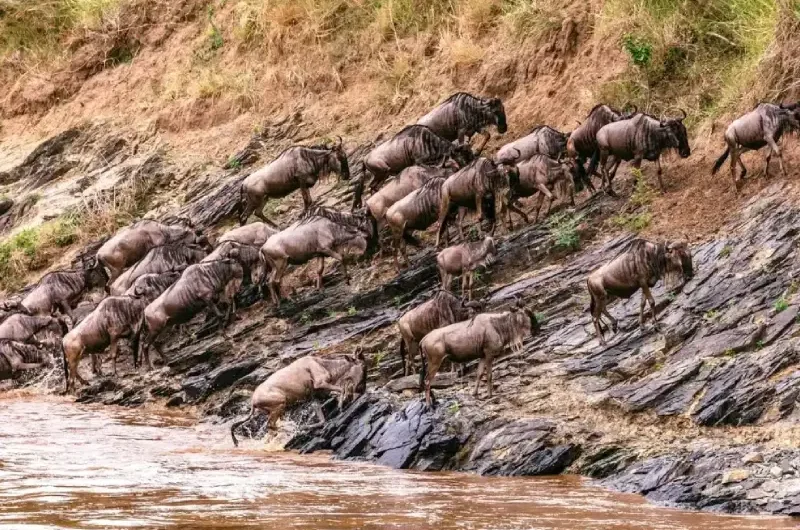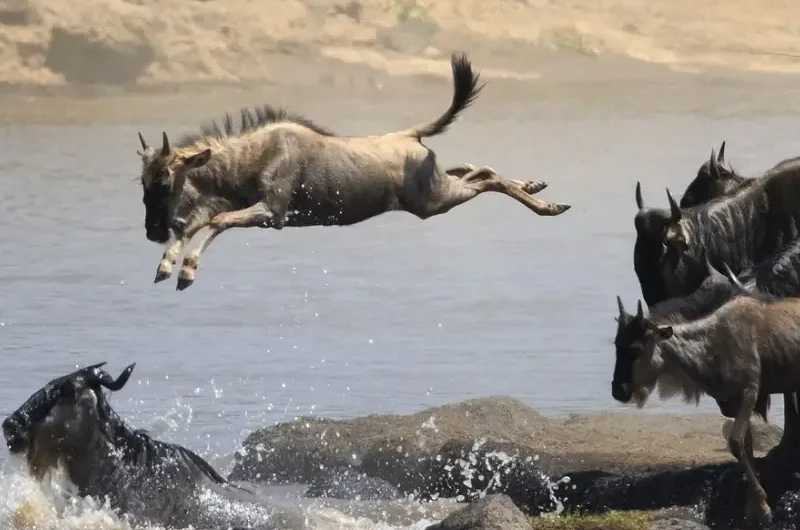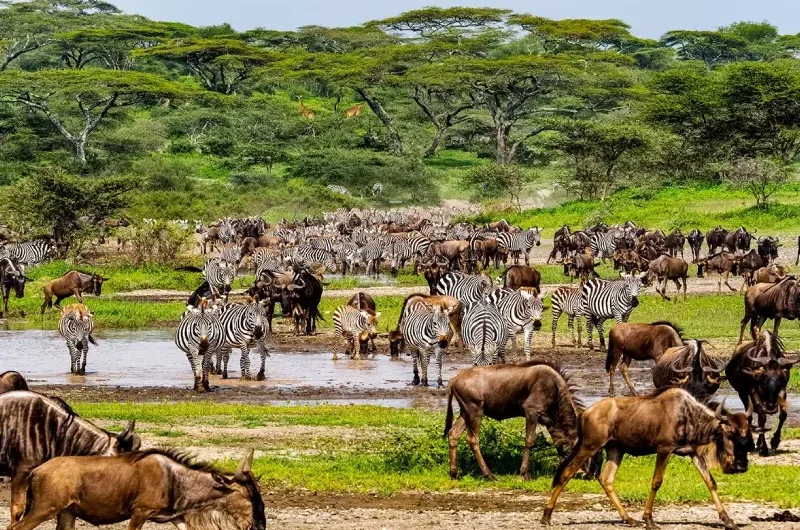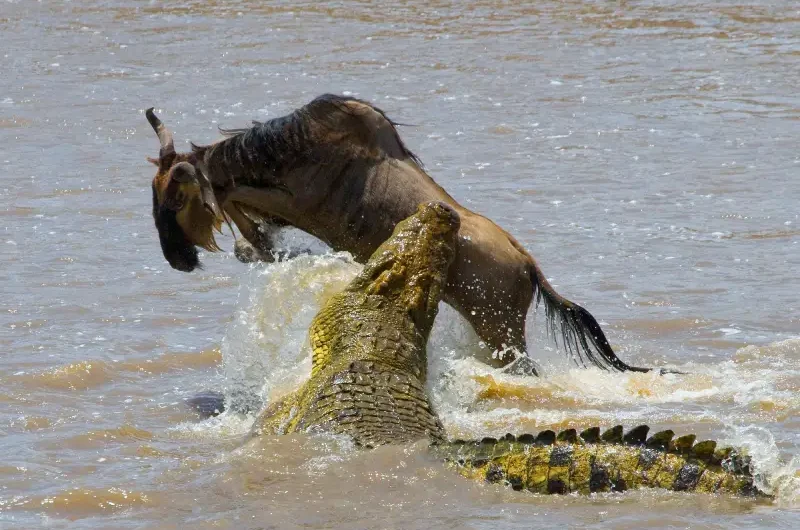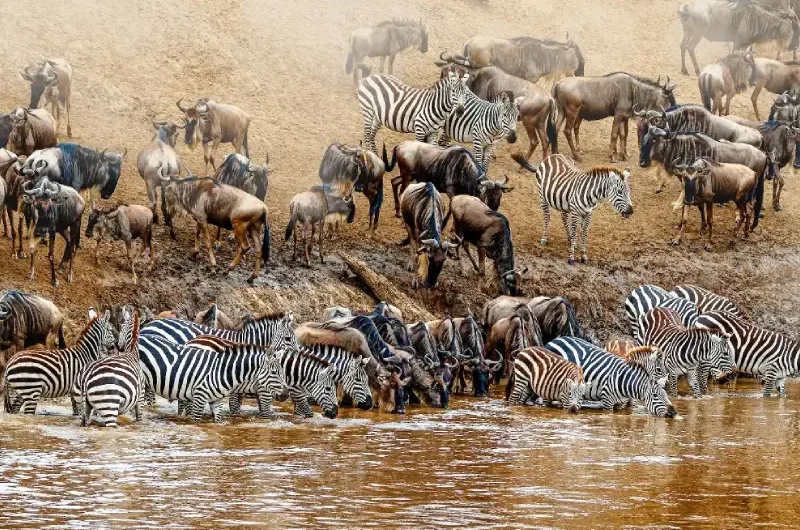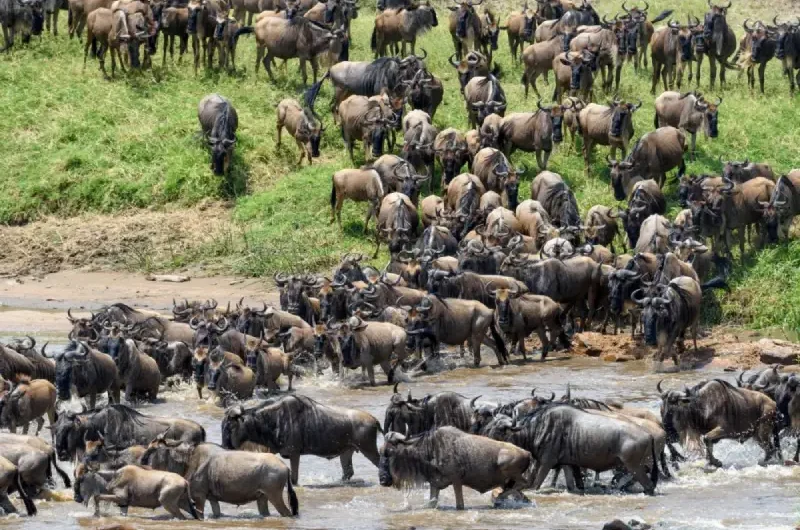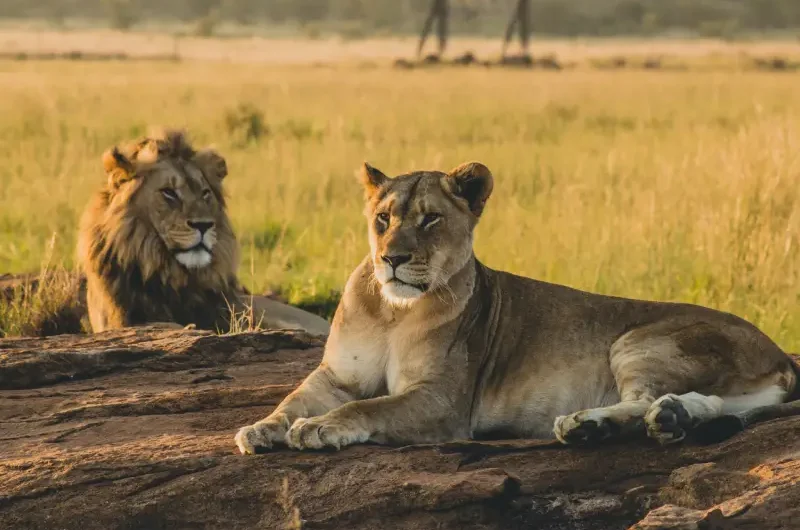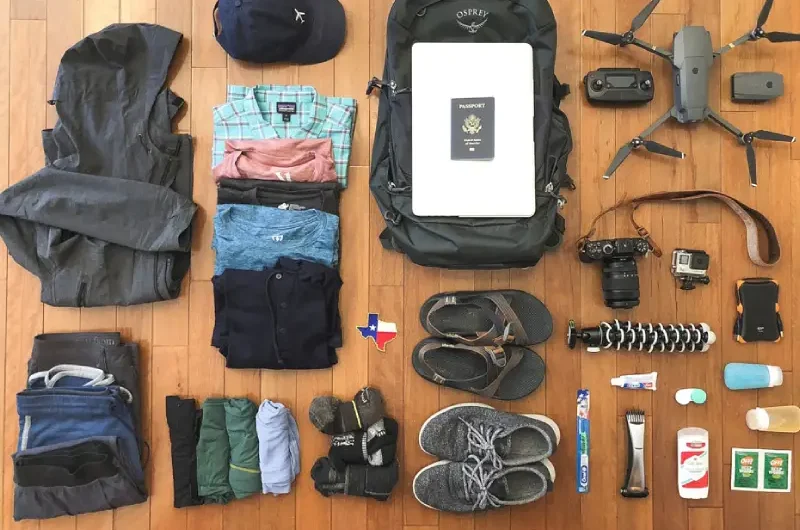When Do Wildebeest Cross the Mara River?
The Mara River crossing is one of the most dramatic and anticipated events of the Great Wildebeest Migration in Kenya’s Masai Mara. Millions of wildebeests, zebras, and other herbivores make their way from the Serengeti in Tanzania into the Masai Mara in search of fresh grazing and water. Understanding when these iconic crossings occur helps travelers plan the perfect safari and capture unforgettable wildlife moments.
Timing of the Mara River Crossing
The Mara River crossings are primarily dictated by the movement of the herds, rainfall patterns, and the availability of grass in the Serengeti and Mara ecosystems. While the migration is a continuous cycle, the most notable river crossings typically occur between July and October, coinciding with the peak migration season.
- July–August: This is usually when the first large herds enter the Masai Mara from the Serengeti. The river crossings begin, often creating dramatic and thrilling wildlife scenes.
- September–October: Herd movements intensify, and river crossings become more frequent and predictable. During these months, travelers have the best chance to witness large-scale crossings, including encounters with crocodiles.
What Triggers the Crossing?
Wildebeests are instinctually driven to migrate in search of greener pastures. The crossing is often triggered by:
- Scarcity of Grass: As the plains of the Serengeti dry up, herds move northward to the Masai Mara.
- Rainfall: Fresh rains in the Mara stimulate growth of new grazing areas, prompting herds to move.
- Herd Instinct: Wildebeests travel in large groups for protection against predators, and collective movement triggers river crossings.
Observing the Crossing Safely
Witnessing the Mara River crossing is a highlight of any migration safari, but it is essential to do so safely:
- Choose High Vantage Points: Lookouts along the riverbanks provide panoramic views of the crossing without disturbing wildlife.
- Stay Inside Vehicles: During game drives, remain inside the safari vehicle to avoid risks from predators.
- Use Binoculars or Telephoto Lenses: This allows close observation of the crossing while maintaining a safe distance.
- Follow Guide Instructions: Experienced safari guides know the safest locations and the best times to view crossings.
What to Expect During the Crossing
River crossings are both dramatic and unpredictable. Key aspects include:
- Predator Activity: Crocodiles lie in wait, creating tense moments as wildebeests navigate the fast-flowing waters.
- Dramatic Action: Herds plunge into the river, sometimes splitting, with individuals struggling against currents.
- Photography Opportunities: The crossings offer incredible action shots, from splashing water to predator-prey interactions.
Conclusion
Wildebeest crossings of the Mara River are a cornerstone of the Great Migration, creating a thrilling spectacle for safari-goers and photographers. The best months to witness these crossings are July through October, during peak migration. By understanding the timing, triggers, and safety considerations, travelers can enjoy an unforgettable experience in Kenya’s Masai Mara, capturing one of nature’s most extraordinary wildlife events in comfort and safety.

